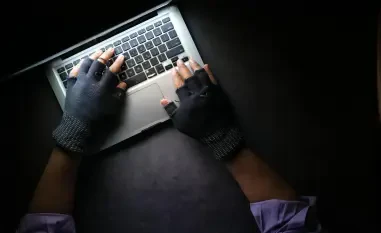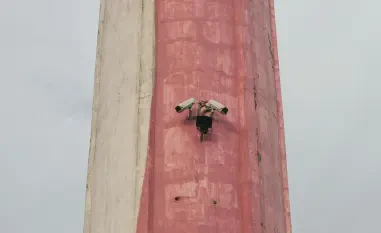Malik Haidar is renowned for his deep insights into cybersecurity, particularly his ability to weave business considerations into security strategies. With his background of combating formidable cyber threats in multinational environments, Haidar brings an invaluable perspective to the ongoing battle against digital crime. Today, we’ll delve into the complexities behind the Danabot takedown—a coordinated effort against a notorious Russian cybercrime operation—and explore what this means for global cybersecurity measures.
Can you explain the significance of the Danabot takedown in the context of cybercrime and cybersecurity?
The Danabot takedown represents a significant victory in the ongoing fight against cybercrime. Not only has it disrupted a dangerous malware operation, but it also sends a powerful message to cybercriminals worldwide that their covert activities are not beyond reach. The operation showcases how collaboration across borders and sectors can effectively neutralize threats that operate across countries.
What role did the US Defense Criminal Investigative Service (DCIS) play in neutralizing the Danabot threat?
The DCIS took a pivotal role by seizing Danabot’s US-based server infrastructure. This action crippled the malware’s ability to communicate with affected systems, effectively cutting off its lifeline. By dismantling its command-and-control servers, the DCIS rendered the botnet’s operations defunct, which was critical in halting its spread and impact.
How does the seizure of Danabot’s US-based server infrastructure impact its operations?
The seizure is a severe blow to Danabot’s operators. It prevents them from issuing commands or updates, which are essential for the malware’s functions. Without the ability to control infected machines, their business model and malicious activities are severely disrupted, decreasing their ability to exploit victims.
Who are the key players involved in the takedown of Danabot? Could you describe their roles?
In addition to the DCIS, the effort was supported by a coalition of international authorities like the FBI and private entities such as CrowdStrike and ESET. These organizations played various roles, from investigative support to technical expertise, showcasing the power of public-private partnerships in addressing sophisticated cyber threats.
What were the charges against the 16 members of the Russia-based cybercrime organization involved with Danabot?
These individuals faced multiple charges related to developing and deploying Danabot. Specifically, they were accused of running a criminal enterprise that transformed from an infostealer and banking Trojan to a sophisticated malware-as-a-service platform, facilitating various forms of cyberattacks.
Can you elaborate on how Danabot evolved from its initial form as an infostealer and banking Trojan to a broader malware-as-a-service platform?
Danabot initially targeted financial data, but as its infrastructure and capabilities expanded, it evolved into a comprehensive platform offering malware services to affiliates. This transformation allowed it to adapt to new threats and easily deploy ransomware and other malicious payloads.
How did Stepanov and Kalinkin contribute to Danabot’s operations?
Stepanov was a key developer and administrator, ensuring the malware’s functionality and evolution, whereas Kalinkin managed the infrastructure and sales operations. Together, they were instrumental in promoting Danabot on underground forums, attracting affiliates to expand its reach through bundled distribution deals.
What are the key features of Danabot’s malware that made it particularly dangerous?
Danabot was designed with several potent features, including data theft from various software, keylogging, screen recording, and real-time remote control. Its ability to inject web forms and execute arbitrary payloads made it highly adaptable and dangerous across different attack vectors.
In what ways did Danabot’s affiliates distribute the malware?
Affiliates typically employed phishing campaigns to spread Danabot. They sent emails with malicious attachments or links, which, once clicked, infected victim devices and integrated them into the botnet, thus broadening the malware’s scope and impact.
Could you explain how Danabot was used by Russian actors for espionage purposes, especially in the context of the Ukraine conflict?
Danabot has been linked to state-sponsored espionage, supporting Russia’s cyber activities during the Ukraine conflict. It was reportedly used to carry out attacks like DDoS against Ukrainian governmental entities, demonstrating its utility for both criminal and state-driven goals.
What does the investigation reveal about the connection between Russian cybercriminals and the Kremlin?
The investigation illustrated a blurred line between Russian cybercrime syndicates and Kremlin-backed operations. While not directly part of the government, Danabot’s activities align with state objectives, highlighting a strategic partnership that leverages criminal networks for political ends.
How do public-private partnerships play a role in addressing cyber threats like Danabot?
These partnerships are vital, combining the agility and resources of private sector firms with the legal and enforcement capabilities of public institutions. Together, they cover gaps in intelligence and operational capability, enabling comprehensive responses to threats like Danabot.
What measures can organizations take to protect themselves against malware similar to Danabot in the future?
Organizations should implement robust security frameworks that include frequent updates and patches to software, employee cybersecurity awareness training, and advanced threat detection systems. A proactive approach can mitigate the risks posed by malware variants aiming to exploit vulnerabilities.
Are there any ongoing efforts or strategies to apprehend Danabot’s leaders, Stepanov and Kalinkin?
Efforts to apprehend these leaders are challenging due to their location in Russia, which complicates extradition. Nevertheless, international law enforcement continues to track their activities and finances, aiming to disrupt or prevent any resurgence of their criminal endeavors.
In your opinion, what does the takedown of Danabot signify for international cybersecurity collaboration moving forward?
This takedown is a testament to what international collaboration can achieve. It encourages a united front against cybercrime, demonstrating that even the most entrenched cybercriminal operations are vulnerable to coordinated, global efforts. It reinforces the need for continued cooperation.
What are your thoughts on the involvement of international authorities and private organizations in combating cybercrime?
Their involvement is essential, as cyber threats are global in nature. The blend of legal authority and technical expertise offered by private companies leads to more effective responses. This synergy fosters innovation in anti-crime strategies and encourages an inclusive approach to security.
Could you share any insights or surprising discoveries made during the investigation of Danabot?
One surprising element was the scale and professionalism of Danabot’s operations, which resembled legitimate business models. The layers of distribution and support offered to affiliates revealed an intricate and well-organized business strategy within the criminal landscape.
What challenges do authorities face when dealing with cybercrime organizations based in countries like Russia?
Authorities face several challenges, including political barriers and jurisdictional limits that hinder arrest and prosecution. Coupled with sophisticated techniques used by cybercriminals to mask operations, these obstacles necessitate strategic persistence and international cooperation.
How do entities like CrowdStrike and ESET contribute to the broader fight against cybercrime beyond just the takedown of botnets?
These entities offer advanced threat intelligence, security solutions, and strategic advice to fortify defenses worldwide. Their technical prowess and innovative approaches contribute to detection, prevention, and capturing of malicious actors on a global scale, extending beyond botnet takedowns.
Given your expertise, what do you think are the future trends in cybercrime that organizations should watch for?
Organizations should be prepared for more sophisticated malware exploiting artificial intelligence and machine learning to bypass security measures. Additionally, ransomware-as-a-service and increased targeting of cloud infrastructures are growing concerns that necessitate vigilant adaptation.













